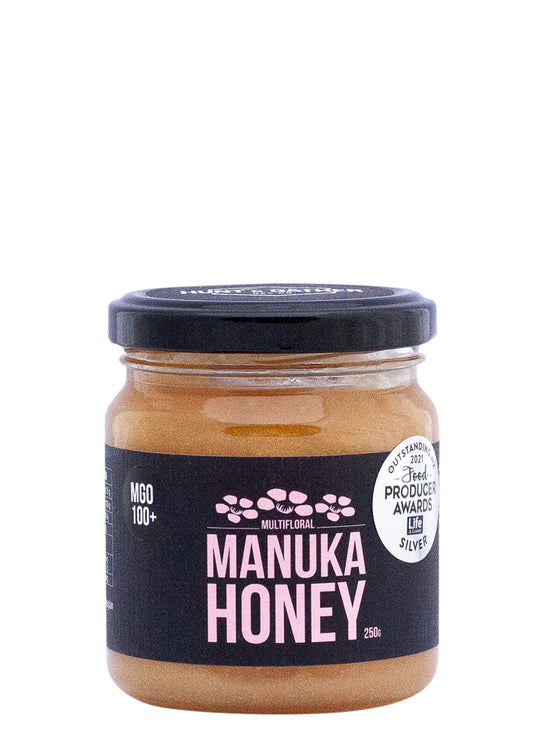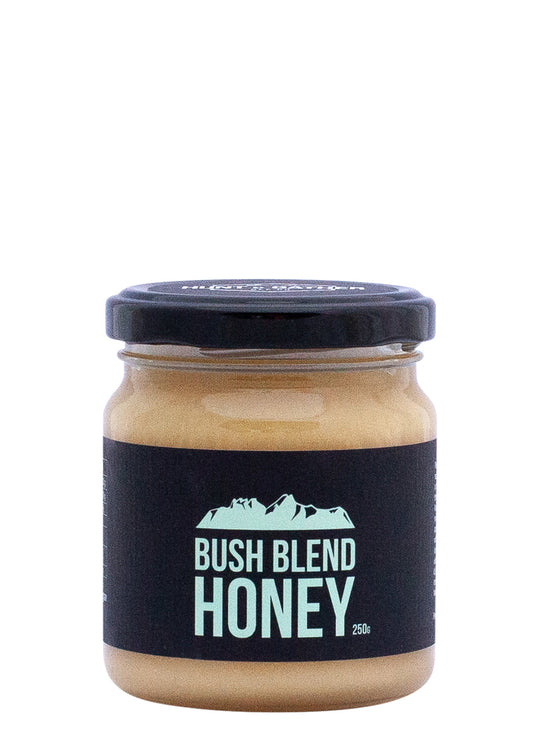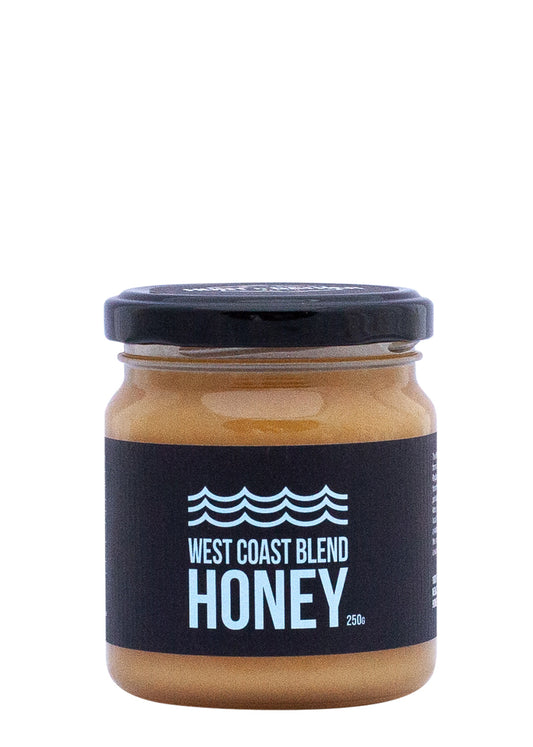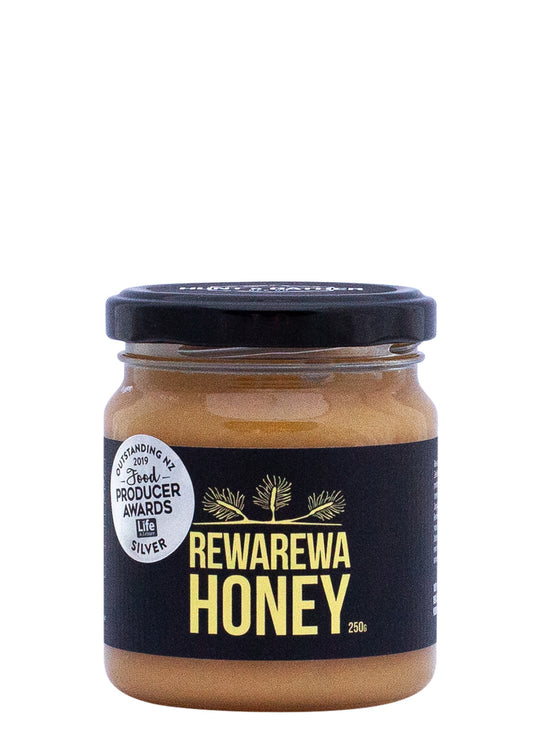The beekeepers riding out the storm
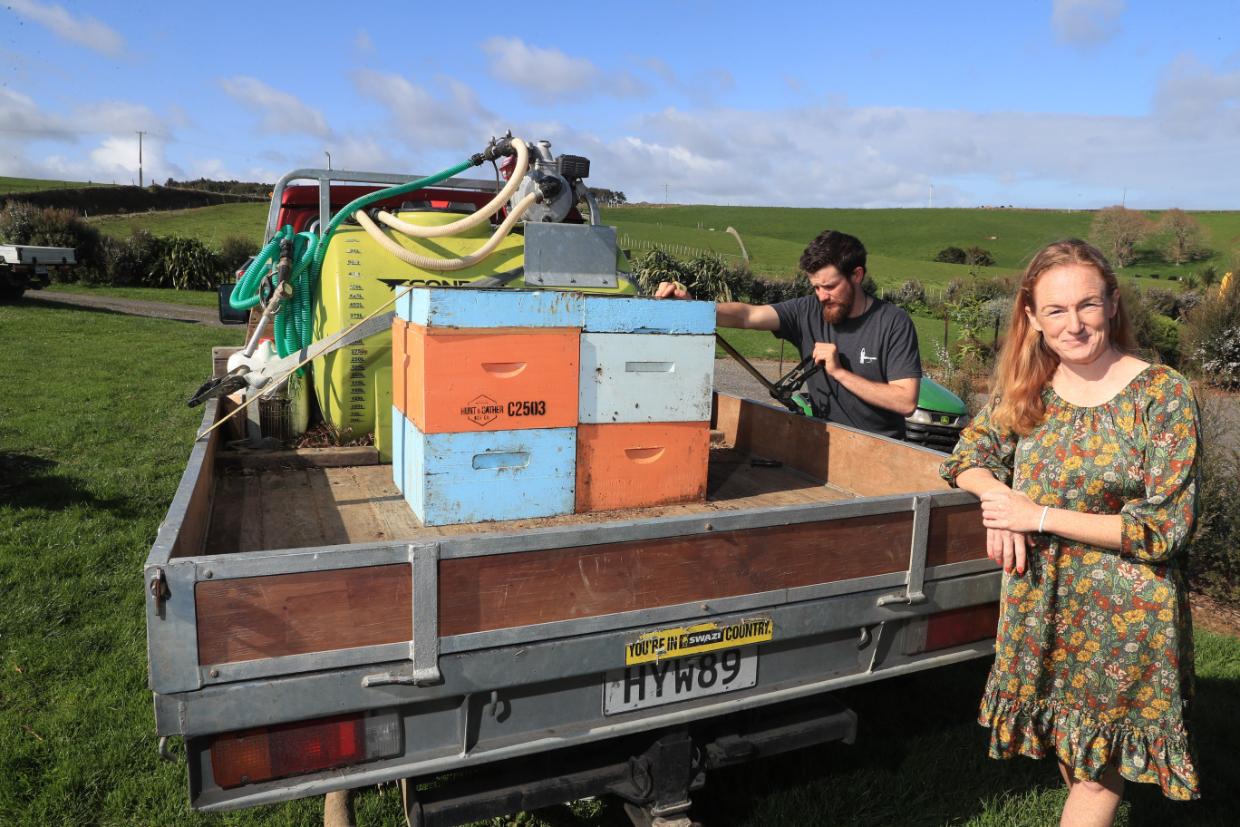
Beekeepers Rory and Hannah O'Brien have a focus on sustainability.
MARK TAYLOR / FILE PHOTO
The guard bees of the varroa-weakened hive do their best to repel the wasps. But in the end, facing an incessant invader, they lose hope. The wasps swoop into the hive and take the honey. The bees starve, and wasps come back and clean them out as well.
The beekeeper returns to an empty hive.
Two years ago, Tamahere beekeeper Jane Lorimer lost 60% of her hives to varroa and wasps.
She was fortunate the spring weather was good as they built hive numbers back up from 650 to 1500.
It’s tempting to characterise the wasp story as a metaphor for the state of the New Zealand beekeeping industry.
The challenges have been mounting, as varroa gets worse and a growing number of wasps take their toll.
And then there’s economics. Rising diesel prices present a huge problem for an industry based on clocking up kilometres, with hives spread far and wide. The lure of big earnings from mānuka honey brought a wave of newcomers. The price slumped, partly due to global recession, industry stalwart Lorimer thinks, and honey has been left stockpiling. A miserably wet summer helped no one.
As for the wasps, Lorimer says riverside planting of natives is providing the perfect home for them to nest and swell their numbers.
Some keepers are quitting the industry. This is the bust after the boom.
Hive numbers peaked in 2019 at 918,000, according to Apiculture NZ. In September this year, registered hive numbers were down to 592,000.
In the same month there were 408 registered beekeepers with more than 250 hives, down from 569 in 2020.

Jane Lorimer is seeing out the challenges.
CHRISTEL YARDLEY/STUFF / WAIKATO TIMES
Jane and Tony Lorimer are riding it out. They’ve been in this game for decades, have seen ups and downs in the past, and know to keep rainy day money aside.
They also increased the number of live package bees they sent to Canada. They’ve been sending bees there for the last 25 or so years - bees don’t survive Canada’s harsh winters, so they need fresh hives. The Lorimers sell them by the kilo, with each kilo including a mated queen. This year, they sent three and a half tonnes. From what Jane can gather, they supplied about 11% of the package bee market there. If not for that, they would have been in dire straits, she says, like a lot of other beekeepers.
Faced with the vagaries of weather and economics, diversification makes a lot of sense. The Lorimers, who employ three staff and a semi-retired maintenance man, also provide pollination hives to orchards, mainly around the Waikato.
As well as honey, they sell beeswax, pollen for health foods and propolis which has antibacterial and antifungal properties. They have the Lorimer’s brand of honey on some supermarket shelves. And they have always extracted honey on contract for other beekeepers as well as for themselves.
At this time of year, Jane is working seven days a week as she raises 4000 queen bees, mostly for their own use but some for hobbyists. She loves beekeeping, and this is part of the reason.
“I wouldn’t do anything else.”

Equipment used to get pollen from the bees.
CHRISTEL YARDLEY/STUFF / WAIKATO TIMES
When it comes to diversification, Te Mata beekeepers Hannah and Rory O’Brien, of Hunt & Gather, are making a dried honey powder and are selling the likes of rewarewa honey, kānuka and a chai spice blend, as well as selling honey to gin makers, a sauerkraut maker and even a jerky company.
Hannah O’Brien would like to see more research into honey from uniquely New Zealand natives such as kānuka, after the battle to trademark mānuka was lost following an Intellectual Property Office of New Zealand ruling in May.
“Because all the research, really, has gone into mānuka honey.” Mānuka honey built the industry, but New Zealand has sat on that, she says.
Mānuka is a monster when it comes to exports, accounting for 84% of total tonnes in the 12 months to June, according to Apiculture NZ. It also says 82% of the sector’s revenue in 2022 was generated by exports. But demand has fallen, with export revenue for the year to June at $379m, down $76m on the previous 12 months.
Mānuka may make the headlines, but all honey is healthy, Jane Lorimer says. “I have pollen on my muesli, I have honey on my toast, I consume kilograms of the stuff every year.”
It’s anecdotal, but she says since she started beekeeping she’s had no dental fillings. “I have had fillings galore up until I started beekeeping.”
Honey can help heal wounds, whereas mānuka can be used for topical treatments like acne, she says.
There’s an obvious flip side to all this sweetness. Bees come with a sting.
How many times has Lorimer been stung?
“More by the government,” she laughs. “No, I mean, some days you get no stings.”
Which means most days you do. She is cheerfully resigned to the fact that there may come a day when a sting finishes her off - achieving something no amount of boom and bust has managed.

Hannah and Rory O'Brien face a range of costs including the rising tide of varroa and twice-yearly audits.
MARK TAYLOR / FILE PHOTO
The varroa that has been a challenge for the Lorimers has also been on the rise in Hannah and Rory O’Brien’s beehives. They are treating their bees four times a year; when they started seven years ago they needed to treat them just once annually.
Miss a treatment, and the hive can die. Hannah is not sure of the exact dollars off the top of her head, but says disease treatment is a huge cost.
There are others as well. On Tuesday afternoon this week, the folders are still out on the O’Briens’ dining table after an audit in the morning, one of two each year. NZ Beekeeping, of which Jane Lorimer is president, is submitting to MPI to get the audits reduced to once annually, and O’Brien is putting in a submission supporting them.
“For people like us, it’s ridiculous,” she says. “Our honey shed is only running for three months at the most in the summer.” The summer audit makes sense, but the winter audit happens when the plant’s shut down. Each audit costs more than $2000, she says.
Like others, the O’Briens have been affected by the headwinds facing their industry, and last term Hannah returned to school teaching four days a week, leaving just Rory full time on the business.
Theirs is a small operation with 400 to 500 hives. Their focus on sustainability sees them using glass jars for their product, and wooden frames for the honey boxes, a more expensive option than the usual plastic.
The O’Briens got in as the market was starting to peak, driven by the mānuka craze. “Within our first year, beekeepers were starting to go ‘oh no, this is starting to look bad’. And then it just kind of got worse and worse,” Hannah says.
But they had worked on dairy farms, and knew the cyclical nature of agriculture. “You have to kind of ride those waves, I guess.”
Over-production saw the wholesale price paid by honey packers plummet, she thinks by about 80%.
“Honey buyers had so many options, and they would just go down to whoever would go to the lowest price, basically.”
But she has been seeing a rebound within the last eight months as beekeepers go out of business and supply drops.

The O'Briens sell a range of honeys.
MARK TAYLOR / FILE PHOTO
The O’Briens have some shelter from the storm, selling most of their product under their Hunt & Gather brand in the domestic market, including online, at markets and through stockists. But input prices rose on the back of the mānuka boom, and as the wholesale price fell, others started packaging their own, undercutting each other to get on supermarket shelves, driving down honey prices, she says.
“That was hard when supermarket honey is getting cheaper and cheaper and cheaper, and our prices are staying high.”
There are rays of hope. O’Brien says their business is growing, and she’s hopeful things are starting to pick up. There are for sale signs out the front of their property because they’re looking to free up capital to build a bigger shed on another site. With luck, her return to teaching may be short term.
Last year was a struggle to get pollination contracts, whereas this year she says they have more contracts on offer than they can take. Some of their hives are going in now to avocado orchards in the Waikato and Bay of Plenty.
It’s all on, come the season. The bees will be producing honey from the end of October to the end of December. “It happens quick,” Hannah says. “Once it starts, it’s on, and then you’ve got to be checking those honey boxes every week or two weeks.”
January to March is for processing in the shed behind their house, outside which orange honey boxes are stacked in readiness for the season. The colour is a nod from Rory to the orange backcountry huts in national parks, Hannah says.
The Lorimers’ boxes, meanwhile, are an array of different colours, to help their bees orientate towards their own hive - the colour you’re least likely to see is red, with bees colourblind in that part of the spectrum.
For Jane Lorimer, it’s about getting the queen bees she has bred out there now. She lists three key things: “Young queens, feed them right, timing of putting your honey boxes on.”

Phil Lester is researching a synthetic RNA control for varroa.
ROSS GIBLIN / ROSS GIBLIN/STUFF
But all beekeepers face an intensifying varroa problem. Victoria University professor Phil Lester, who is researching a synthetic RNA control for the mite, says beekeepers report spending $50,000-$100,000 a year on control, and rising.
Beekeepers are having to treat more often, and data shows the industry has been losing more colonies to varroa each year for the past five years. It’s possible the mite is getting more resistant to pesticides, and it may also be that the deformed wing virus it carries is getting more harmful.
That lends urgency to research into fixes.
Lester is working with a US company, Greenlight Biosciences, to research a novel approach to pest control known as gene silencing. It involves synthesising a double-stranded RNA which is fed to bees. Varroa mites are then exposed to it and stop reproducing. It’s not a genetic modification and only the mite is affected, Lester says.
Greenlight is finding trials in the US are proving more effective than some chemical control treatments, he says.
After lab testing, last summer Lester and his team started field trials. It’s not a silver bullet, but it is looking positive, he says, with the possibility of it being available within three years. Given it is such a new approach to pest control, consumers may have questions about RNA residue in honey, he says, though so far in their use there is “almost” none. In any case, there are already RNA residues in honey, along with pesticides.
It might be that the control is done when there’s no honey flow, with another form of control used during honey flow. “What we’re thinking is it’s going to be a different tool, or an additional tool in the toolbox for the beekeepers to be able to use.”
He says other research is being conducted into lithium, which is toxic to mites, and also into breeding bees that can sense varroa and clean out infected cells.

Jane Lorimer holds a cell with a young queen yet to hatch.
CHRISTEL YARDLEY/STUFF / WAIKATO TIMES
There’s all this and then there’s sheer flat-out wonder.
Lorimer has seen the extraordinary mating flight of bees just once. She arrived at an apiary site, thought there was a lot of activity going on and pulled up.
Then she watched as a great mass of bees poured out of the hive, headed about 50 metres away and circled around for about 10 minutes at the height of some willow trees, before returning en masse to the beehive.
In that single flight, the queen bee may have mated with up to 20 drones. They’re the ones that didn’t make it back. When drones mate, their genitalia explode, as they sacrifice their lives for the greater good.
The queen, however, the centre of all the attention, would have gone on to produce thousands of eggs, laying up to 3000 a day, Lorimer says.
Lorimer breaks open a cell cup in an upstairs area of their shed to reveal a queen, small, pale, seemingly barely formed, one of about 4000 she is raising.
Were she to survive, the colony would feed her up and within a week she would be out there, flying and mating.
She would lay both fertilised and unfertilised eggs, the latter producing drones which therefore have a grandfather but not a father, Lorimer remarks.
“This is the fascinating stuff that I do. I love raising queens.”
Richard Walker
October 7, 2023

